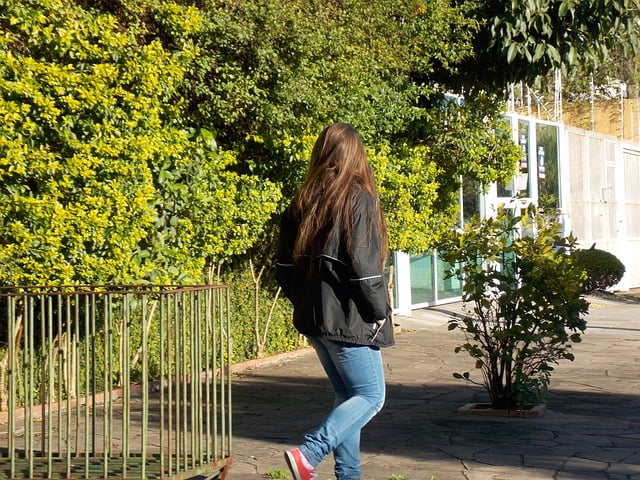When the clocks go back and British Summer Time (BST) comes to an end. For many of us it really does signal the start of the winter. The extra hour we get in bed is scant consolation for the drudgery of going to work and coming home in the dark. A few days in and the majority of us to get into the swing of the darker nights, even if we do keep forgetting to change the clock in the car. However for some people living with dementia the end of BST can affect routine, one of the possible causes of a pattern of behaviour known as ‘Sundowning’. This can potentially cause a person with dementia to wander and ultimately go missing. In this article we take a look at what Sundowning means , the potential causes and some tips on how to reduce the chances of sundowning and potentially preventing a person being reported missing.
Please note: Wandering is not always a bad thing. It can be beneficial, often relieving boredom, stress and giving the person a real sense of purpose and independence. We also recommend you read our articles – ‘Dementia – An insight into Walking, Wandering and Missing’ and ‘Dementia – Reducing the risk of harm from ‘Wandering’.
What is Sundowning?
Sundowning is an informal name for a pattern of increased behaviour at certain times of the day – late afternoon or early evening (commonly between 4 and 8pm). It is also called ‘late-day confusion.’These behaviours can include increased anxiety, confusion, agitation and aggression. Whilst this will not occur in everyone with dementia, it becomes more likely in those people in the moderate to severe stages of dementia, often continuing for several months. They may become increasingly worried that they need to be somewhere else or that they are in the wrong place. In some people this unease and agitation may prompt them to wander.
What causes Sundowning?
The exact causes of sundowning are unknown, but are linked to the changes in the brain. Tiredness, restlessness and a lack of sensory stimulation in the evening may all be factors. Potential reasons for a change in their behaviour at this time of day may include:
- a change or loss of routine particularly if this was previously a busy part of the day for the person.
- an imbalance to the ‘body-clock’
- disturbed patterns of sleep
- hunger or thirst
- effects of recently taken medication or the fact that medication taken earlier is wearing off
- pain and discomfort
- continence issues – needing the toilet
- uncomfortable environment – too hot or cold
- noise and light disturbance (too much or too little)
- anxiety
- boredom
- being unable to communicate any of the above to others
This is not a definitive list and the triggers for sundowning will be unique to the specific person. It is important to adopt a problem-solving approach and try to establish the reason for a person’s change in behaviour. Identifying the causes are key. Carers should maintain a diary over a period of time which tracks the persons daily activities, behaviour and environment. What has changed when the symptoms of sundowning appear? Don’t ignore the obvious, the changes might be very subtle and simple, like the television being turned on in the early evening. Once you know the potential causes then you can put in place a plan to reduce the persons stress, confusion and anxieties.
How can a caregiver reduce Sundowning?
Some useful tips include:
Routine and Schedule
- develop a program of calm activities for the sundowning part of the day. Keep any activities simple, enjoyable, non-challenging and stress free. If possible try to choose activities that are familiar, something they may have done in the past e.g. setting the dinner table. It may be that they enjoy watching or listening to a favourite television or radio programme, or music. However, this should not be a show/programme that over stimulates. What works for one person may not be suitable for another e.g. bathing before bed may calm, but can also stimulate. Work out what works for the individual.
- daytime activity – ensure the person has daily routine with meaningful activities – hobbies, coffee mornings, walks, gardening etc. Try not to deviate from this routine to avoid confusion and reduce anxiety. Any change to a routine should be introduced gradually.
- strike a balance – any daytime activities should ensure that the person has enough exercise. Keeping them active will potentially help them sleep at the right time and enhance the quality of the sleep. However, care needs to be taken that you do not overtime them, for fatigue is a trigger for sundowning.
- daytime sleeping – keep this to a minimum if possible. A long sleep in the afternoon will make it much more difficult for a person to fall asleep at night. However, as we already know , this is not an exact science and fatigue contributes to sundowning. Therefore an active morning may necessitate an early afternoon nap to reduce fatigue later on. Inclusion of sleep patterns in a log/diary will help you decide what is best for the individual.
Environment
- temperature – should be controlled and not too hot, not too cold.
- comfort – ensure that the person’s environment is calm, quiet, comfortable and contains familiar personal and loved items e.g. family photos.
- noise – reduce excessive noise (TV , radio, washing machine), but be mindful that extreme silence may also cause distress.
- light – reduce bright light which may cause overstimulation. Equally very dark lighting may make a person feel they can’t see anything and lead to anxiety. Find the balance and make adjustments.
- clothing – ensure that they wear comfortable and temperature appropriate clothing. Tight garments can cause irritation.
- continence – do they need to use the toilet or have sanitary wear changed. Ensure that they can easily access the toilet. Are toilets clearly marked or do they need help?
Food and Drink
- ensure that the person is adequately fed and adjust their eating habits if required. Excessive meals may leave them bloated, increase agitation and affect sleep. Too little food will leave them hungry and have the same impact.
- try to make sure that consumption of caffeinated drinks is limited e.g. tea, coffee and certain carbonated sodas. If the person enjoys a good cup of coffee, try to ensure that this is consumed in the earlier part of the day, not just before sleep. Use decaf products as alternatives. Encourage them to give up alcohol or consider alcohol-free beer and wine.
Medical problems
- medical issues – ensure that any potential medical issues are investigated. Be alert to the fact that a person might be feeling discomfort or pain, but not able to communicate this to you.
- medication – if a person is on medication for dementia or for other medical problems, it is vital that the medication and the doses are the correct ones and not causing other underlying issues such as causing drowsiness in the daytime, incontinence or increasing confusion. If there are any doubts, then carers should go back to the GP to discuss medication/dose etc. Medicines that have recently been administered can also increase anxiety/aggression.
As it Happens
- communication – it sounds obvious but engage them in conversation and ask them what is wrong. Ensure you keep your voice calm, caring and comforting. If they like physical contact and it is appropriate to do so, hold their hand or place a comforting hand on or around them.
- distraction – where you cannot identify the source of the anxiety , then use distraction. Attempt to reduce or remove visible objects which may have prompted the person to become agitated. Is your presence causing the anxiety? If so take yourself away. Find out what distraction techniques work e.g. simple activities, playing calm and soothing music, talking to them about something they enjoy.
- fidget aids – consider the use of worry beads, fidget blanket or a rummage box.
- avoid physical restraint unless the person puts themselves in danger – – it will almost certainly make them become more anxious, afraid and potentially aggressive.
Finally , when the clocks go back, consider putting clocks back in 15 minute increments over four days.
More about dementia can be found at:
Alzheimer’s Society – the UK’s leading dementia support and research charity in England, Wales and Northern Ireland. Has a specific section for professionals. National Dementia Helpline: 0300 222 11 22
Dementia UK – charity providing specialist support for families facing dementia. Dementia Helpline: 0800 888 6678
Alzheimer Scotland –charity that works to improve the quality of life of people affected by dementia in Scotland. 24 – hour Dementia helpline –0808 808 3000








